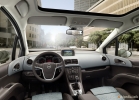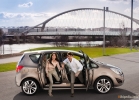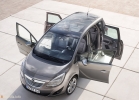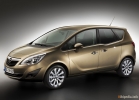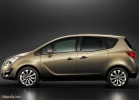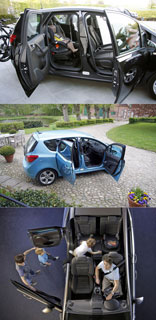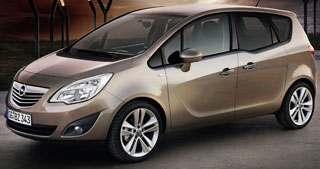Opel Meriva test drive since 2010 Minivan
Kolobok
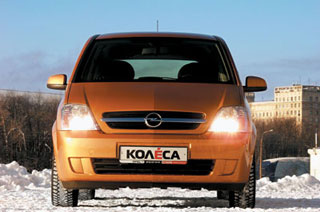 This Opel could be boring if not for a couple but. Sharm to the machine gives an exquisite bend of the waist line and the graceful architecture of the front racks.
This Opel could be boring if not for a couple but. Sharm to the machine gives an exquisite bend of the waist line and the graceful architecture of the front racks. Metamorphoses that have been happening recently with the Opel brand are simply pleasing. It seems that this rather mundane, sullen Brand learned to amaze what no one expected from him. After a series of dull years, Ryusselsheim shot the queue of extraordinary cars: Zafira, Speedster, Vectra GTS, Signum and now Meriva. From the last of them, Opel intended to bring the culture of Japanese subcompact single -combat, often called microvoans to the Old World. Thus, the German brand acquired an impressive arsenal of Wan: there is a tiny Agila, there is Meriva, there is a compacting Zafira, then the cargo-passenger Combo Tour, the Vivaro minibus and Minano minibus. Impressive? But the Sintra minivan was recently produced!
For the first time, the world heard about the new car two years ago, when the company's press service has spread official information about the promising Concept M (as Meriva was then conditionally called). The car was designed in the company Opelevsky center IDTC, and the Brazilian studio of the GM corporation was responsible for the design. The international Meriva, built on the modified Corsa model, was launched in the series last summer at the same time under the Chevrolet brands (in San Jose-Dush-Kampush, Brazil) and Opel (in Saragos, Spain). Why do you need such a car, and how is it ready to seduce the buyer?
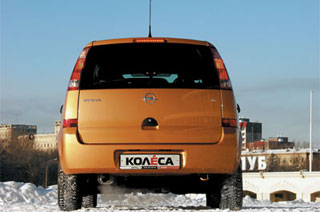 Firstly, modest sizes and a sense of car. Mikroven is seven centimeters shorter than Astra, one and a half centimeters already her and as much as twenty higher. The visibility of the driver’s place is good: it remains only to figure out where the hood ends, and feel free to maneuver in the stream and in the parking lot. However, the very feeling of the machine arises not only thanks to understandable dimensions, the friendly behavior of the car plays an equally important role. Meriva accelerates, slows down or turns always fast, fluid and absolutely predictable. The configuration of the electrical power is optimal: a change in reactive action reflects in detail what is happening with the machine. There is a clear zero here, with the slightest deviation from which the steering wheel begins to rapidly pour in informative weight. Yes, the rolls in corners are noticeable, but their level only allows the vestibular apparatus to accurately analyze the size of the lateral overload, no more. There is no discomfort at all.
Firstly, modest sizes and a sense of car. Mikroven is seven centimeters shorter than Astra, one and a half centimeters already her and as much as twenty higher. The visibility of the driver’s place is good: it remains only to figure out where the hood ends, and feel free to maneuver in the stream and in the parking lot. However, the very feeling of the machine arises not only thanks to understandable dimensions, the friendly behavior of the car plays an equally important role. Meriva accelerates, slows down or turns always fast, fluid and absolutely predictable. The configuration of the electrical power is optimal: a change in reactive action reflects in detail what is happening with the machine. There is a clear zero here, with the slightest deviation from which the steering wheel begins to rapidly pour in informative weight. Yes, the rolls in corners are noticeable, but their level only allows the vestibular apparatus to accurately analyze the size of the lateral overload, no more. There is no discomfort at all. But with all its complaisance, Meriva does not pull on the title of sports car. Dynamic riding reveals the hitch in the feedback on gas, and the insufficient severity of the steering, and the adjustment of the adhesion drives and gear switch. Why did this suddenly talk about the active driving of a purely family car? Yes, because Meriva is so energetic and obedient, such a complete understanding is established between it and the driver that the desire to light up itself arises. And the car really allows you to polyghat!
The second plus of the machine is a branded scheme for the transformation of the FlexSpace salon. The rear seat is divided into a ratio of 2: 1: 2 and can move back and forth by 13 cm. Large backs are slightly adjustable in the angle of inclination, and a narrow central insert can be folded and a box with many compartments is installed on it under any trifle.
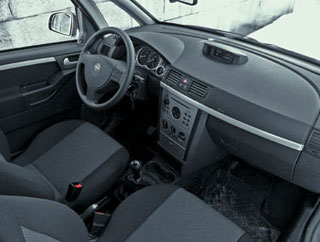 The folding algorithm is as follows: first the headrests are dismantled, then the backs are leaned forward, and then the whole seat is flooded to the floor. If this is not enough, you can fold the back of the front right chair.
The folding algorithm is as follows: first the headrests are dismantled, then the backs are leaned forward, and then the whole seat is flooded to the floor. If this is not enough, you can fold the back of the front right chair. Comfortableness is another undoubted dignity of the meriva. Sitting behind is quite acceptable: a lot of space above the heads, the necessary minimum in the legs. There are some amenities these pockets and folding tables in the backs of the front seats, as well as headphone nests and a duplicate CD-reiver control unit between the front seats. It is a sin to complain about ergonomics to the driver: a chair with a successful profile, a grip steering wheel, well -read devices, order with buttons. And Meriva rides is very pleasant. The smoothness for such a baby is simply phenomenal! Even on large potholes, the car only bounces elasticly, but the small ones are completely unnoticed. Add a high-class noise and vibration isolation here, and you will understand why the speed in the meriva is poorly felt.
Finally, a few words about design. This Opel could be boring if not for a couple but. Sharm to the machine gives an exquisite bend of the waist line and the graceful architecture of the front racks. And do not be too seriously treating the choice of color: bright, funny options such as our gold or light blue go to the car. But the cold geometric interior in a typically Opel spirit is a direct consequence of its stylistic unification with other brand models. This technique makes us differently perceive the car: outside a kind of toy bun, inside a full, even a respectable car. Heat the ambition of the owner.
Meriva is faced with rigid competition even inside the Opel brand itself. Here are prices for cars with the same engines (1.8 liters, 125 hp): the station wagon Astra Caravan costs $ 18230, Meriva 20215, Zafira 21740. Dangerous rapprochement! Of course, youth, unusual appearance and increased maneuverability are on the side of the meriva. But is this enough for a successful confrontation with the usual machines?
Autography
Opel Meriva
Predecessor
Agila (2000)
Premiere
september 2002
Still known as
Chevrolet Meriva
Platform
Corsa C.
Body
5-d. Universal
Prototype
Concept M (2002)
Engine power
1.6-2.0 l (75-136 l.
Production
Spain
Expected replacement
2010-11
The car is provided by Laura.
During the test, the car is insured by LLC Nation Center.
Text: Leonid Klyuyev
Photo: Roman Ostanin
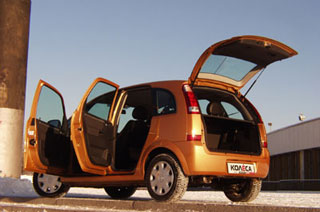
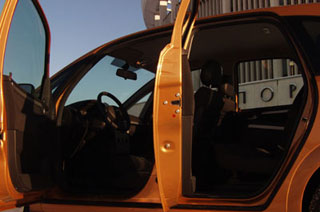
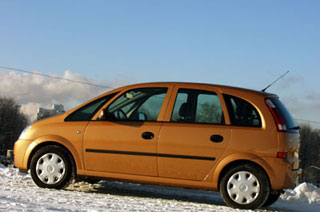
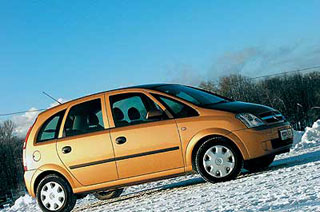
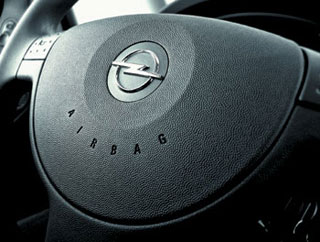

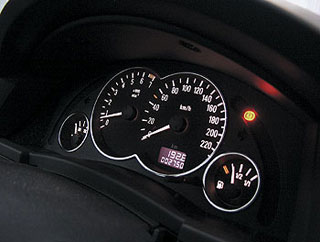
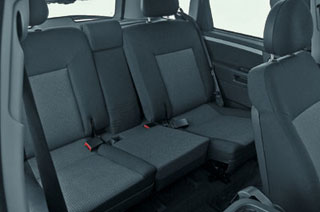
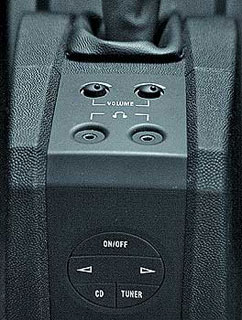
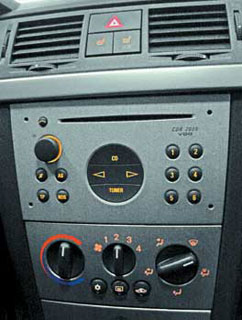
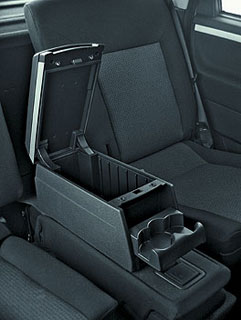
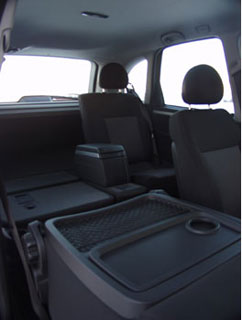
Source: Wheel magazine [No. 77/2004]
Video Test Drive Opel Meriva since 2010
Opel Meriva crash tests since 2010
Opel Meriva test drives since 2010
Opel Meriva crash test since 2010
Krassh Test: Detailed Information89%
Driver and passengers
55%
Pedestrians
77%
Children-passengers
86%
Active security system

